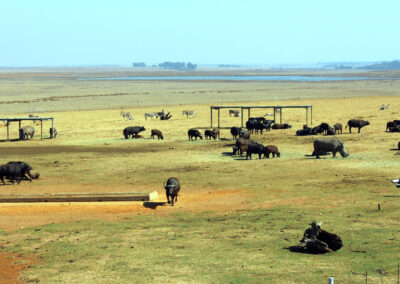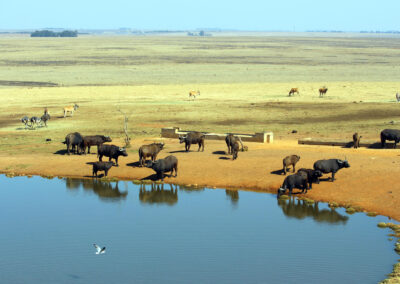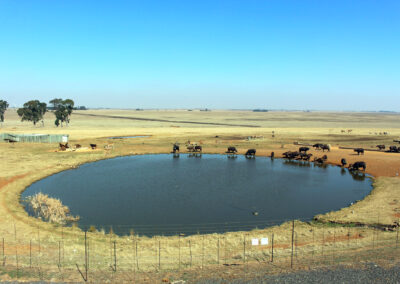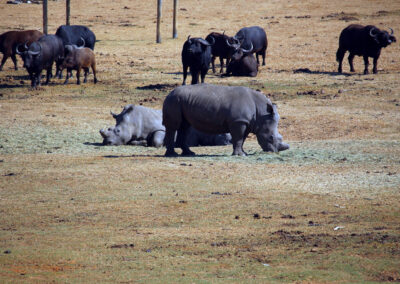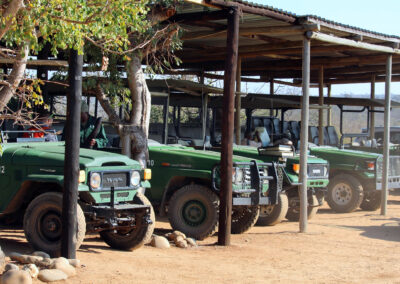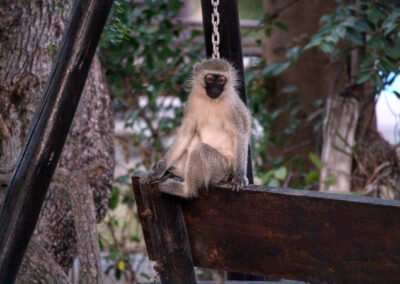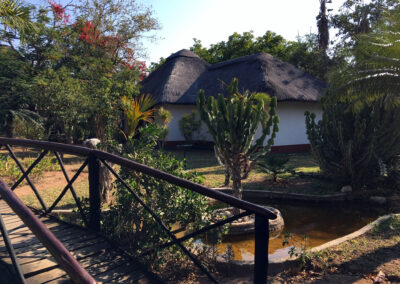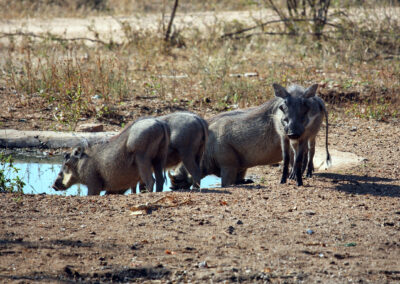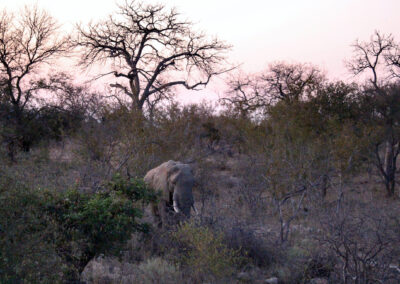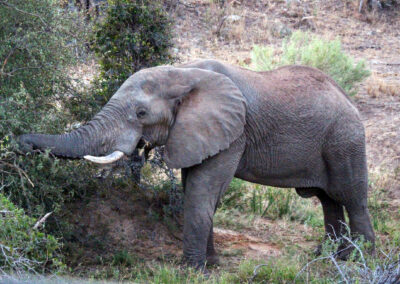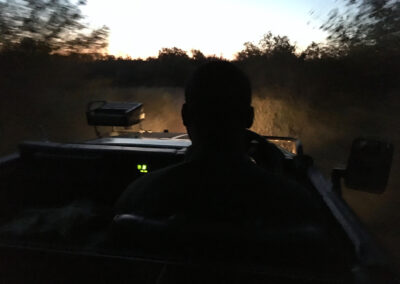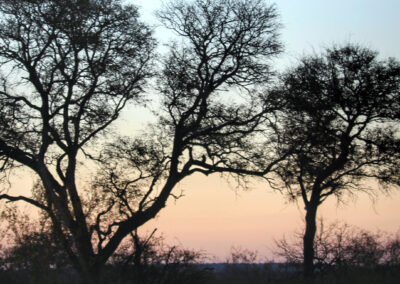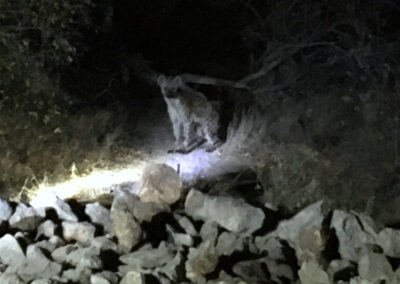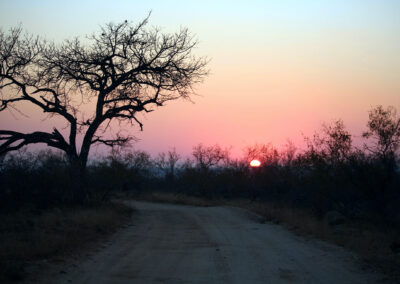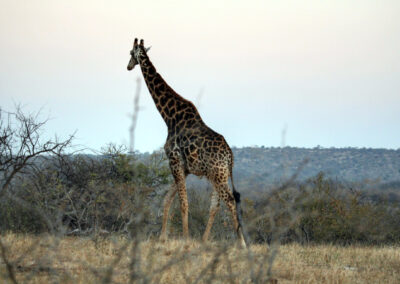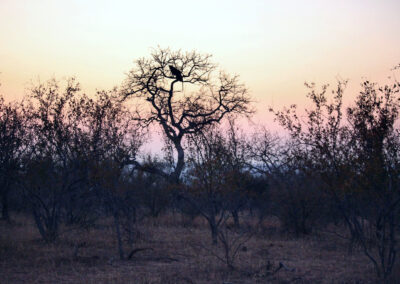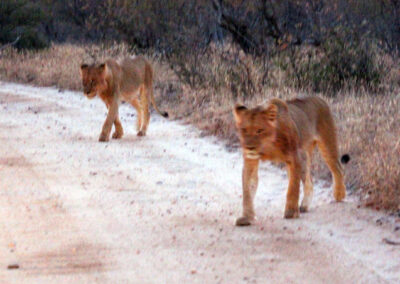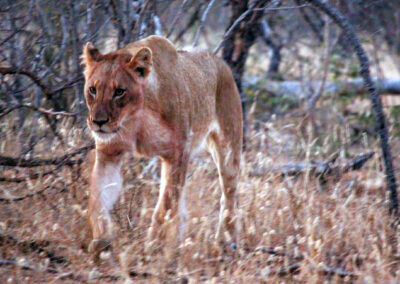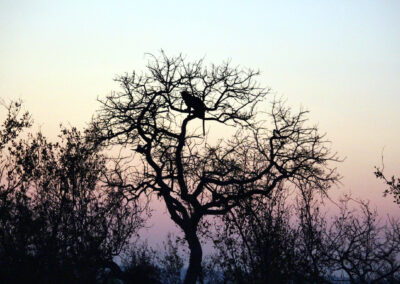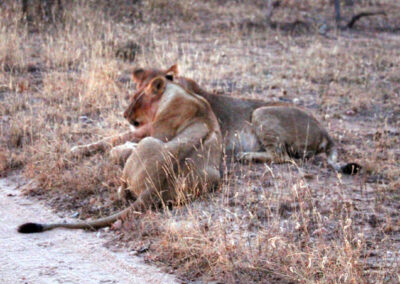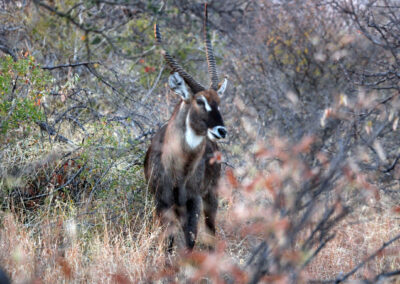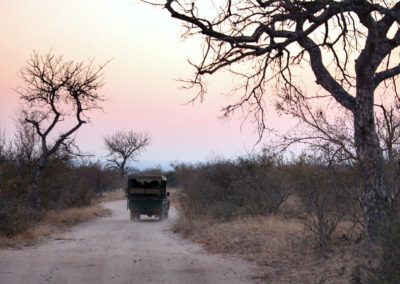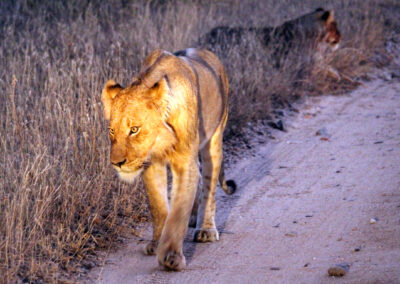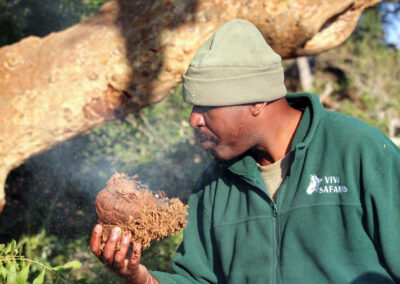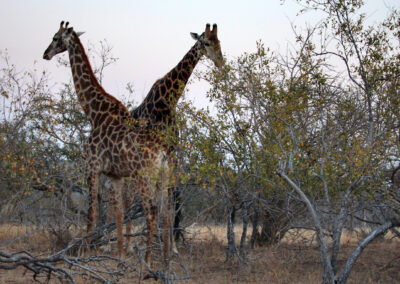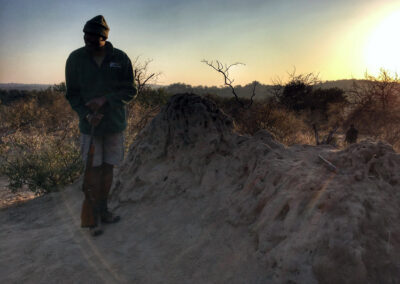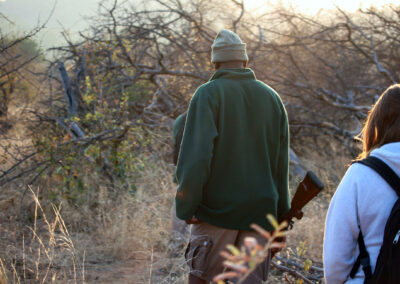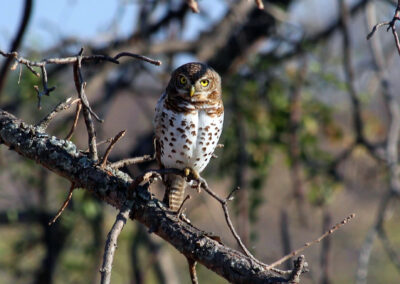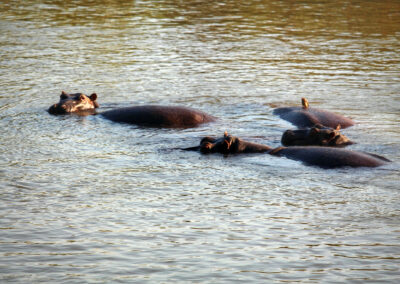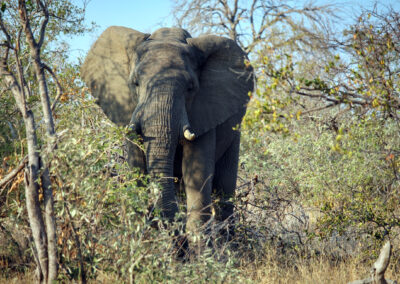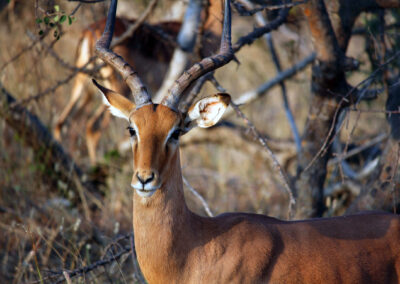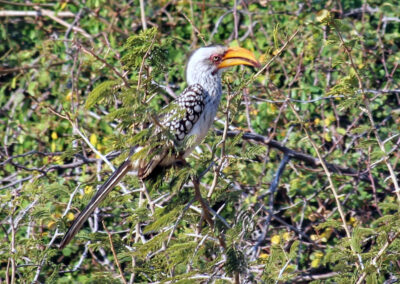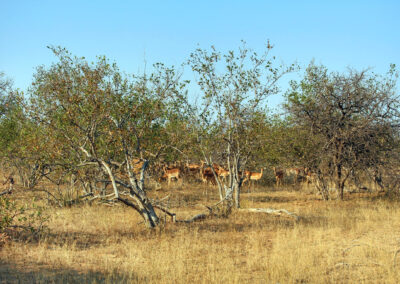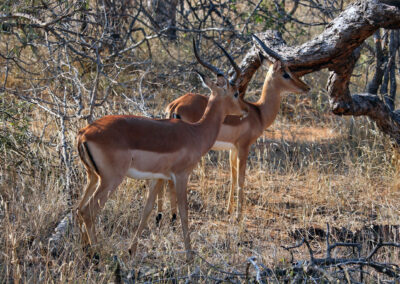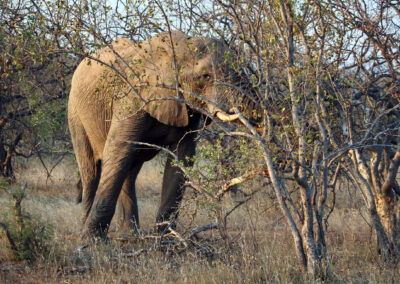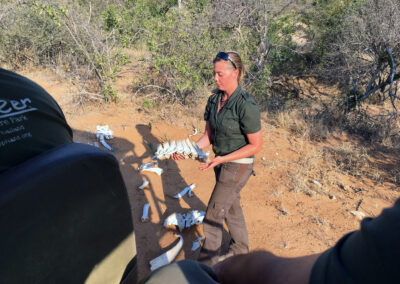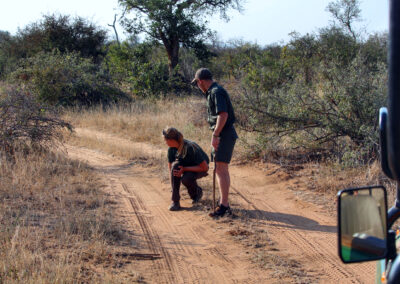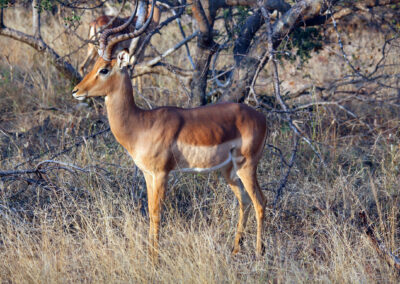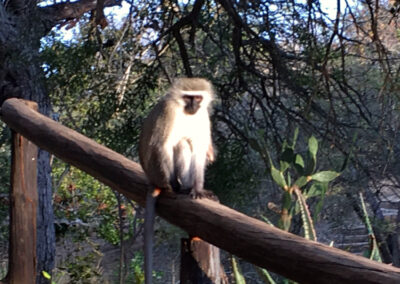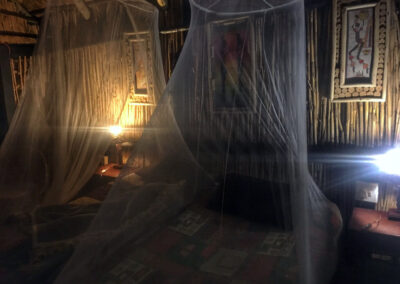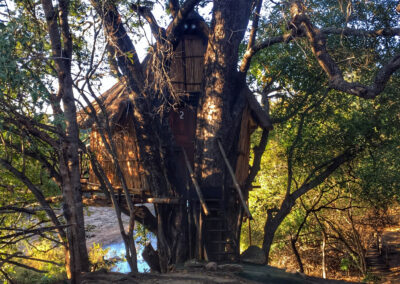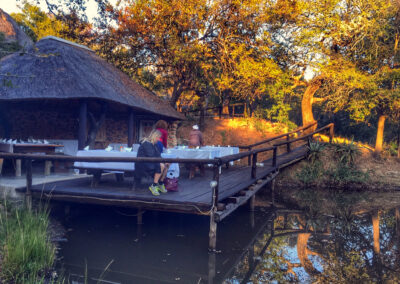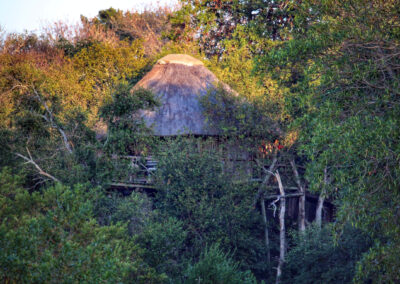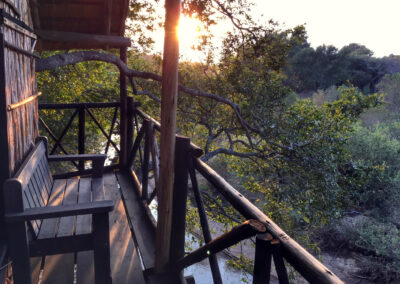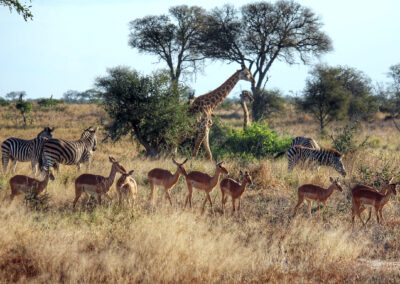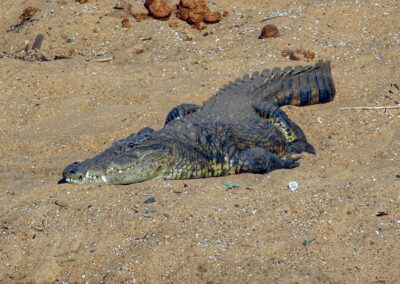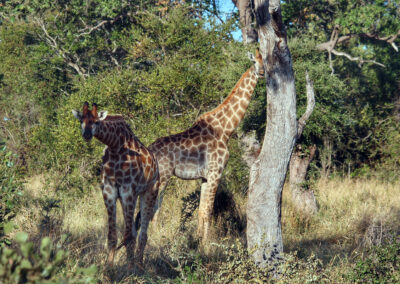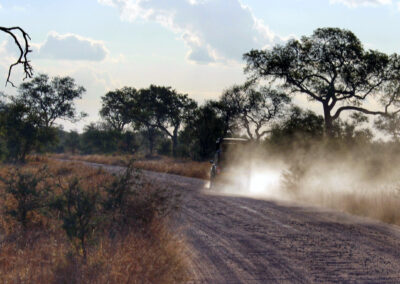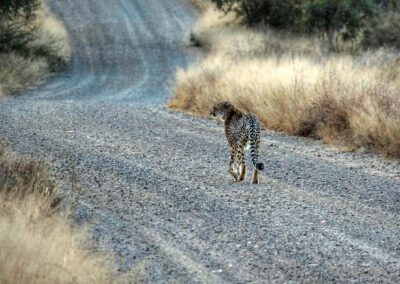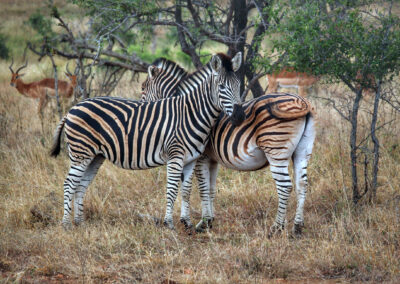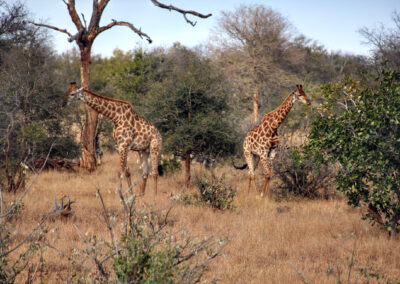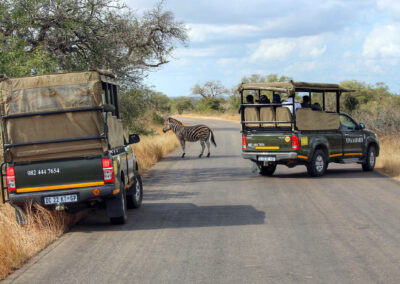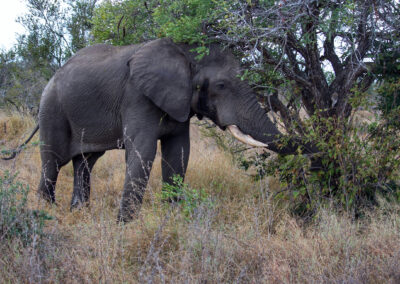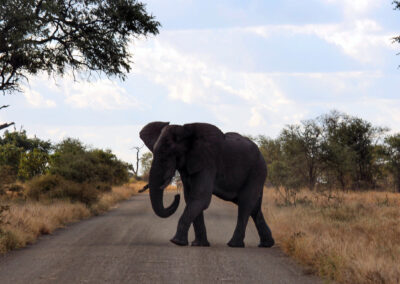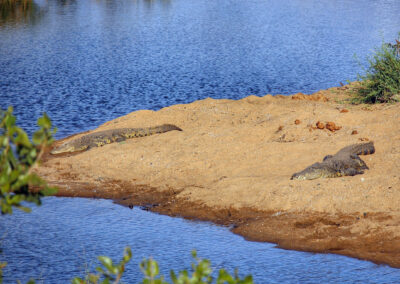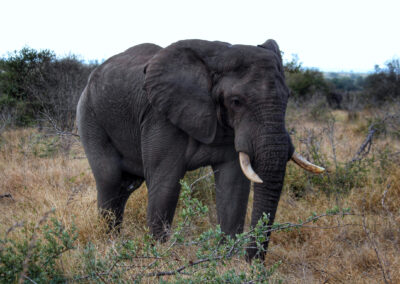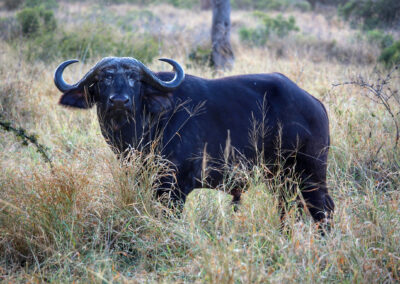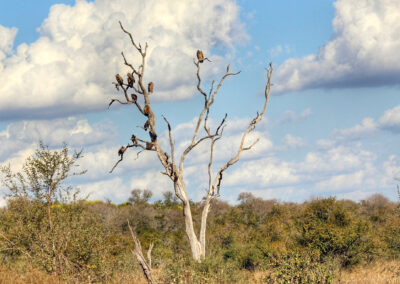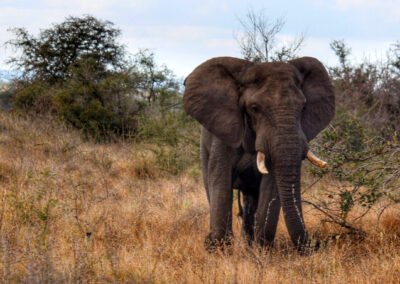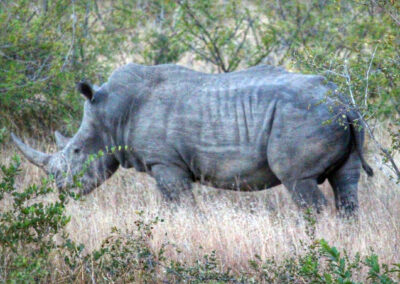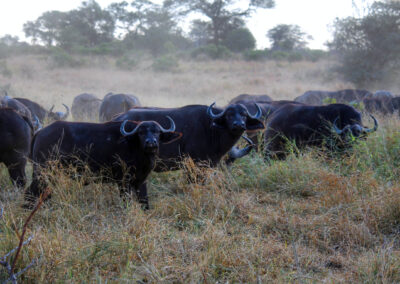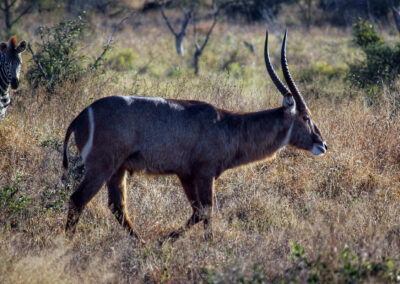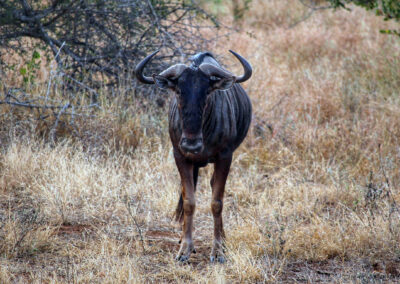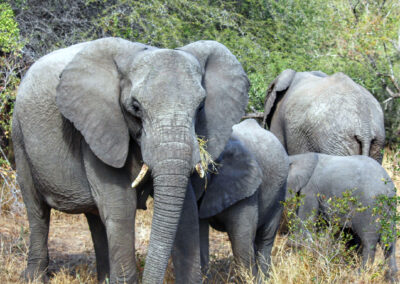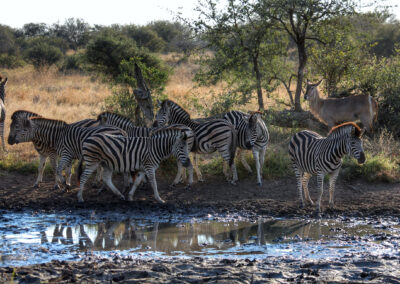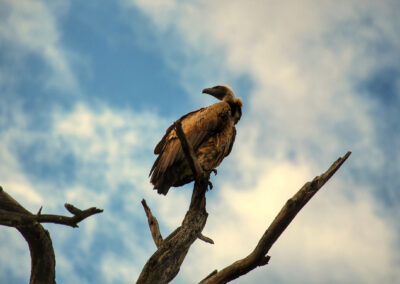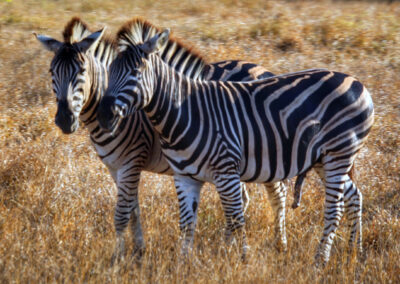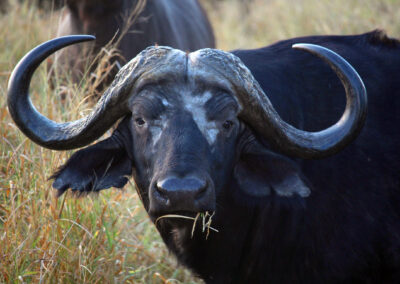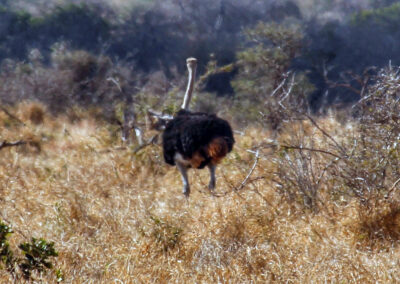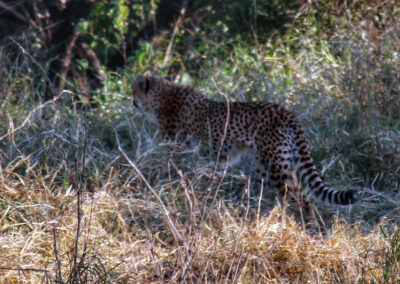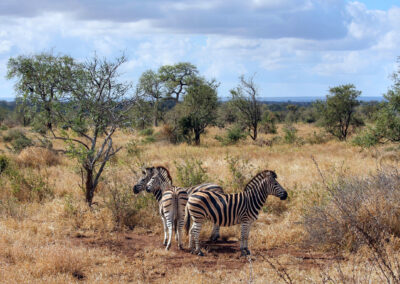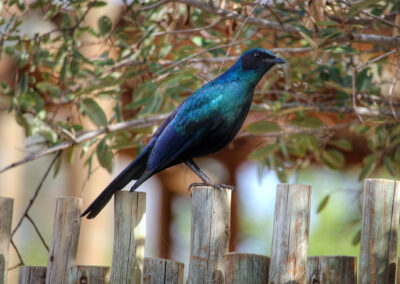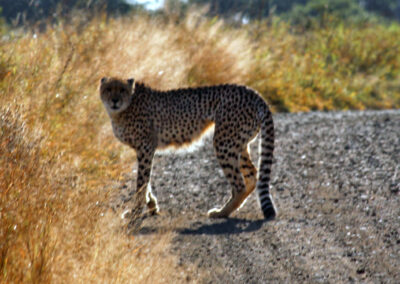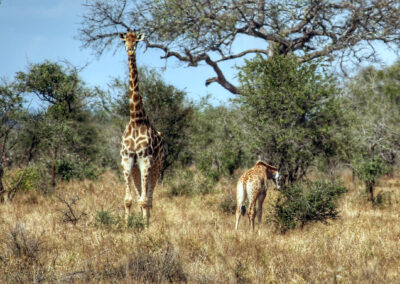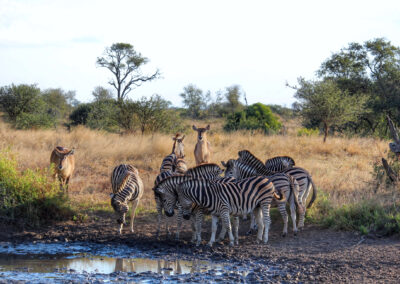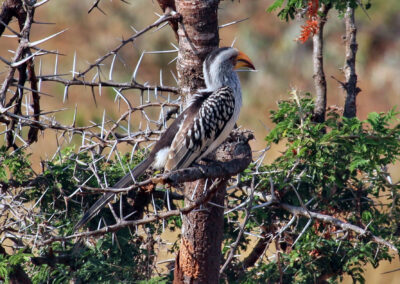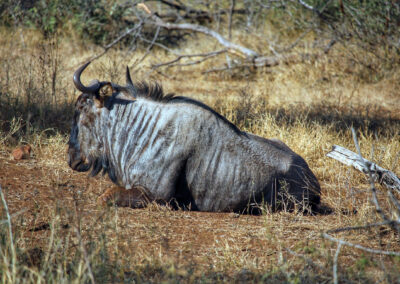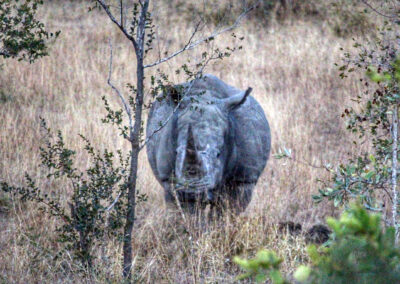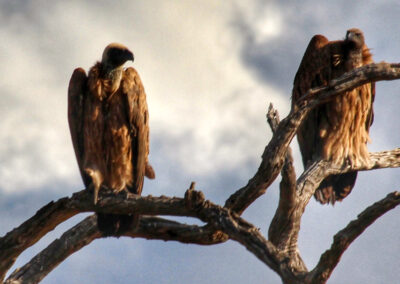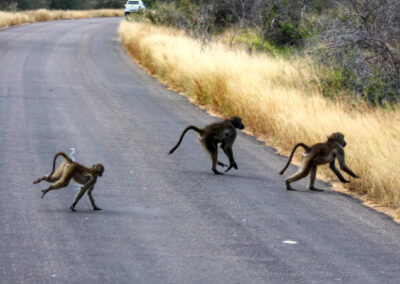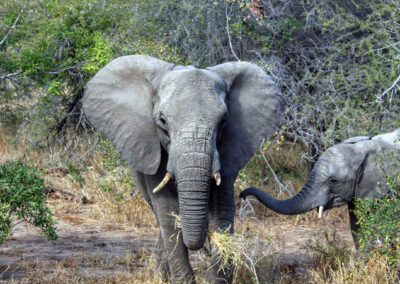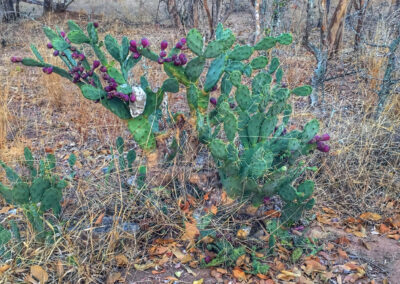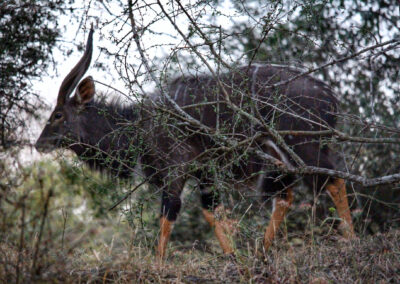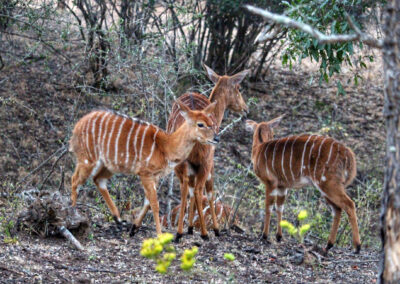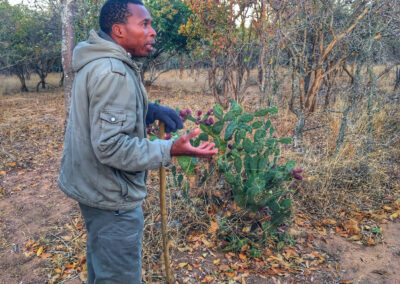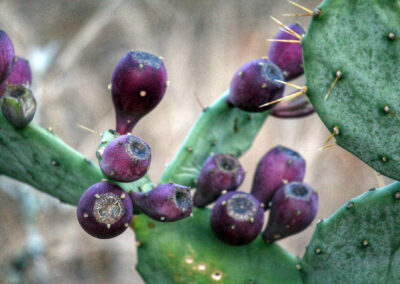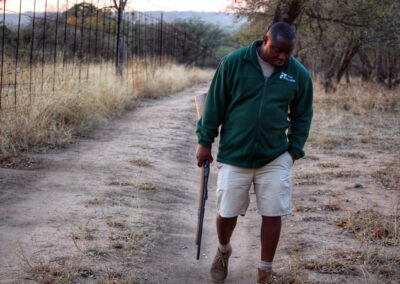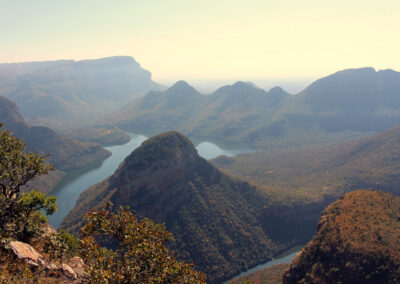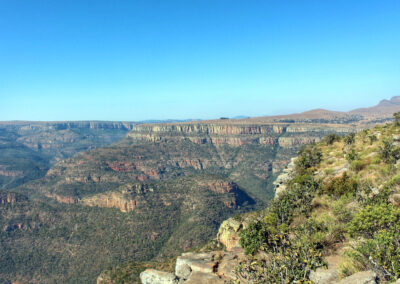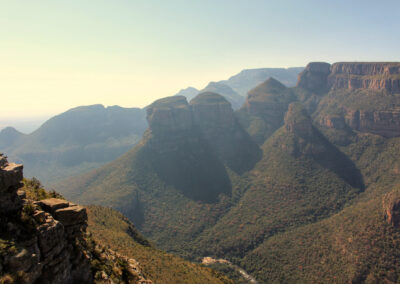Kruger National Park
Facts Kruger National Park
- The name “Krüger National Park” is wrong. The park is named after Paul Kruger, an important political leader and president of the Republic of South Africa in the second half of the 19th century.
- The park is the largest game reserve in South Africa and stretches across the provinces of Mpumalanga and Limpopo. It is around 350 kilometers long and between 40 and 80 kilometers wide.
- Founded in 1898, Kruger National Park is one of the oldest national parks in Africa.
- The park is home to an impressive variety of animal species, including over 140 mammal species, more than 500 bird species, over 110 reptile species, around 50 fish species and a variety of amphibians and insects.
- The “Big Five” is a term used by big game hunters to describe the animals that have historically been the most difficult and dangerous to hunt: lion, leopard, elephant, buffalo and rhino.
- The most dangerous animals are buffaloes, especially the older bulls (so-called “dagga boys”).
- There are various accommodation options, including rest camps, safari lodges, private reserves and rustic campsites.
- Visitors can take part in guided safaris, either in open off-road vehicles or on their own with their own vehicle. Hikes, bird watching and other activities are also on offer.
- The park comprises various ecosystems such as savannahs, forests, rivers and dry scrubland, which are home to a rich and diverse flora and fauna.
- The Kruger National Park plays an important role in the conservation and protection of endangered species as well as in the promotion of conservation and environmental education programs.
Travel time Kruger National Park
| Jan | Feb | Mar | Apr | May | Jun | Jul | Aug | Sep | Oct | Nov | Dec |
| 21°-33° | 21°-33° | 19°-32° | 16°-30° | 10°-29° | 6°-27° | 6°-26° | 9°-28° | 13°-30° | 16°-31° | 18°-32° | 20°-33° |
In spring from September to November, the vegetation begins to bloom and temperatures gradually rise. The animals are often easier to observe as the vegetation is not as dense as in summer. It is also a good time for bird watching, as many migratory birds come to the park.
The summer from December to February is hot and humid with frequent rainfall. The landscape is green and lush, but the dense vegetation can make it difficult to see animals. Ideal for birdwatching, as many birds are breeding and active during this time.
In the fall (February to April), temperatures gradually drop and rainfall decreases. The vegetation slowly thins out, which improves the visibility of the animals. This is a good time for wildlife spotting as the vegetation is less dense.
Events Kruger National Park
Petroport Alzu
2017
Sights & Facts
- Fuel station with a variety of facilities and amenities such as restaurants, cafés, a grocery store and souvenir stores.
- Adjacent wildlife park where visitors can observe exotic animals such as giraffes, zebras, buffaloes and hippos.
- Approx. 200 km beyond Johannesburg, halfway to the Kruger National Park.
Tremisana Safari Lodge
2017
Sights & Facts
- The accommodation options at Tremisana Safari Lodge range from traditional safari tents to comfortable chalets or bungalows.
- The lodge organizes various safari activities, including day and night game drives and guided walks with experienced guides to offer guests the best possible game viewing.
- The camp is surrounded by an electric fence and there is a “danger zone” all around with a view of an artificial waterhole.
Evening Game Drive
2017
Bush BBQ
2017
Sights & Facts
- Besides hyenas, there was also a honey badger. The honey badger also fights much larger animals and is considered the bravest animal in the world.
Morning Game Drive
2017
Sights & Facts
- Sighting of a leopard in the tree and 9 lions around the safari vehicle.
Morning Bush Walk
2017
Sights & Facts
- A termite mound can grow up to 7 meters high and be home to millions of termites.
- Lighting and inhaling dried elephant dung is said to help relieve headaches and nasal congestion.
- Long spitting contest with excrements from the giraffes.
- The soft leaves of the weeping willow serve as a substitute for toilet paper in the bush.
Afternoon Game Drive
2017
Sights & Facts
- Introduction to tracking.
- Identification of the bone finds.
Marc’s Treehouse Lodge
2017
Sights & Facts
- Open camp on the river with tree houses a few hundred meters apart.
- Lots of animal tracks in the camp and many animals at the waterhole in the dark.
- Toilet on the floor with open spiral entrance.
Orpen Gate
2017
Sights & Facts
- Entering the central part of the Kruger National Park from Johannesburg.
- Observation of vultures on a tree above lions and their prey.
- With a top speed of 120 kilometers per hour, the cheetah is considered the fastest animal in the world.
Morning Bush Walk
2017
Sights & Facts
- Explanations of the prickly pear cactus and various smaller animals.
Blyde River Canyon
2017
Sights & Facts
- The canyon stretches for around 25 kilometers along the Blyde River and is up to 750 meters deep.
- Third largest canyon in the world after the Grand Canyon (United States of America) and the Fish River Canyon (Namibia).
- The most famous viewpoints include the Three Rondavels Viewpoint , Pinnacle Rock and God’s Window , all of which offer impressive views of the canyon and the surrounding nature.
- The “Three Rondavels” (Three Sisters) are 3 huge spirals of dolomite rock.
- There are also several waterfalls in the gorge, such as Berlin Falls and Lisbon Falls, which cascade into the gorge and add to the beauty of the landscape.
- The area surrounding the canyon is rich in flora and is home to numerous animal species, including birds and wild animals such as baboons, rock hyrax and various species of antelope.
